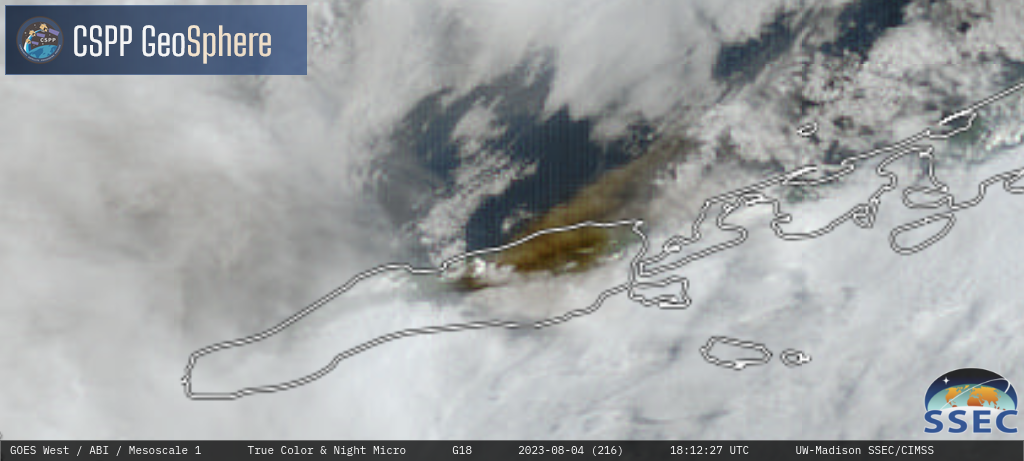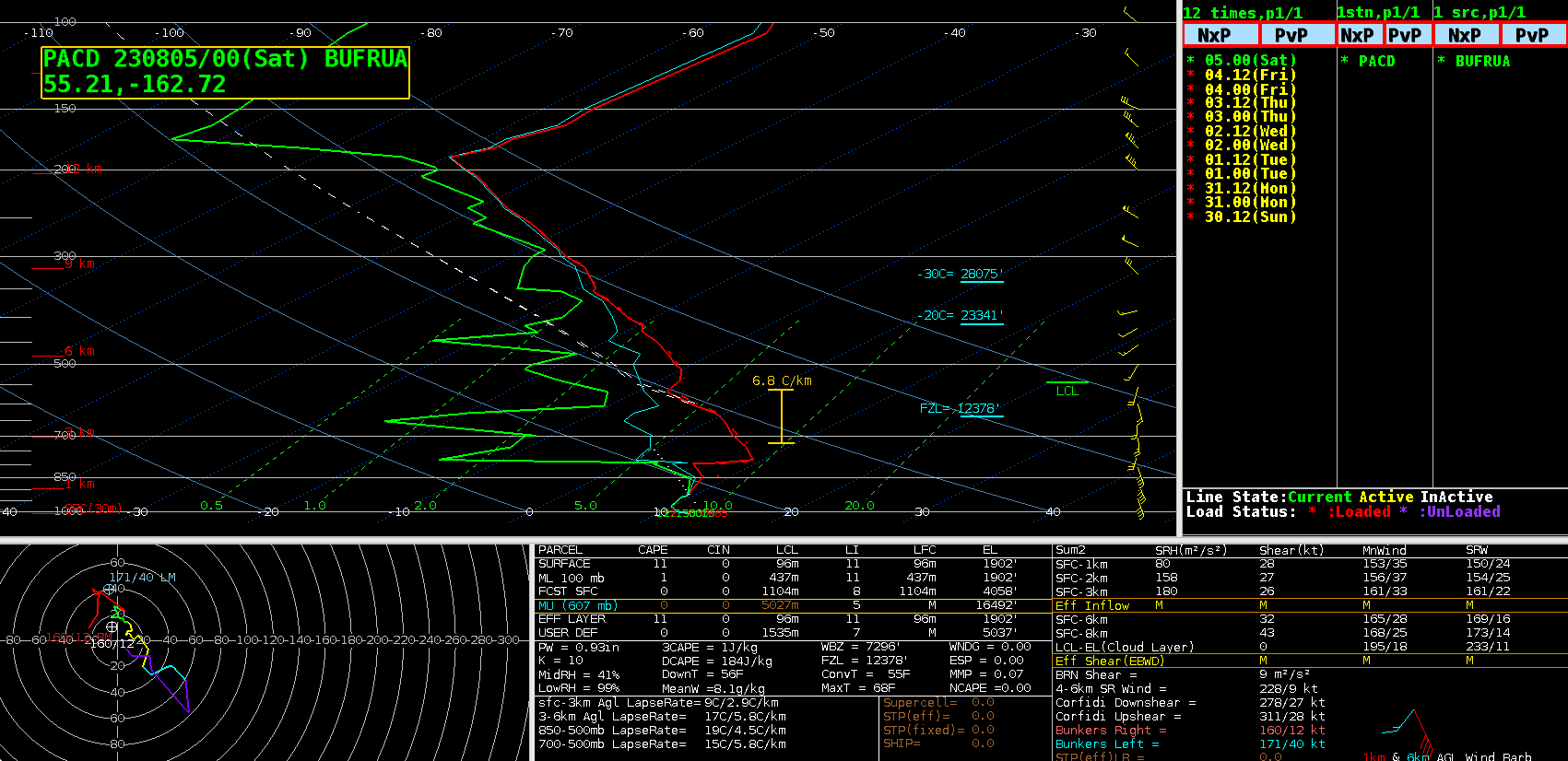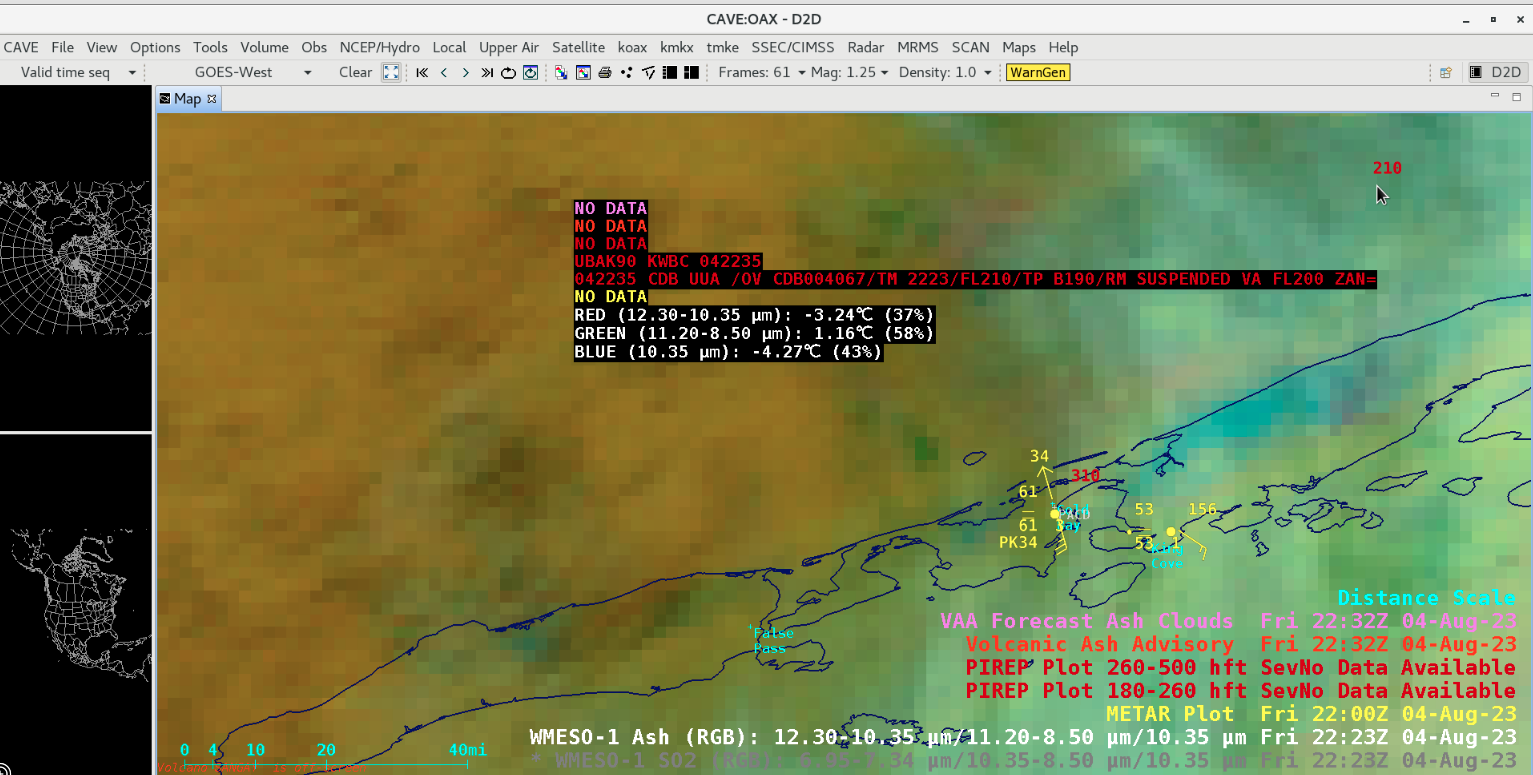Eruption of Mount Shishaldin in the Aleutian Islands
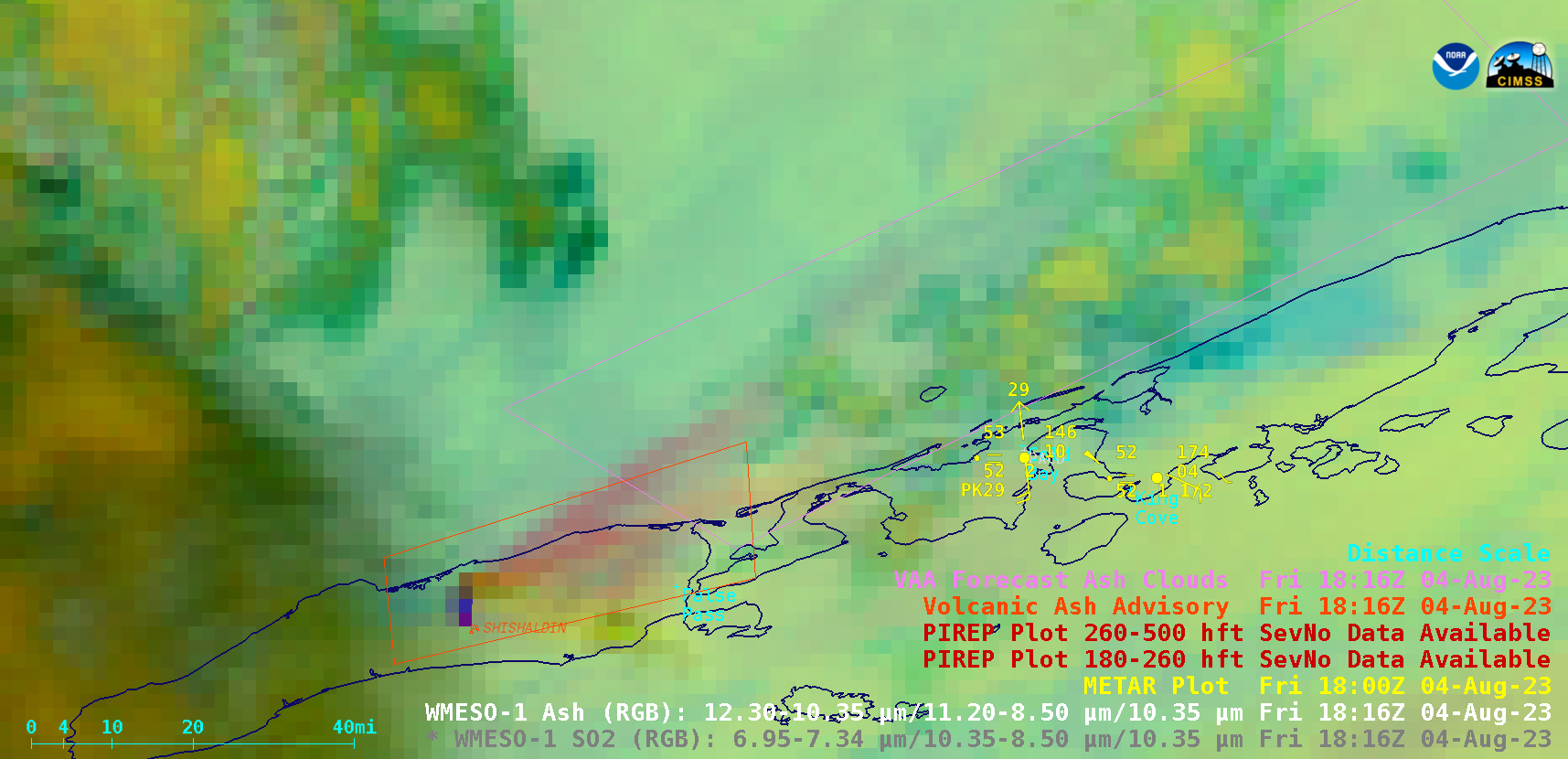
GOES-18 Ash RGB and SO2 RGB images [click to play animated GIF | MP4]
1-minute GOES-18 True Color RGB images from the CSPP GeoSphere site (below) helped to highlight the ash-rich volcanic cloud (shades of tan to brown) moving northeast from the summit of Shishaldin, and also showed the higher-altitude volcanic cloud drifting southeast (which contained SO2).
A plot of 0000 UTC rawinsonde data from Cold Bay, Alaska (below) indicated that northwesterly winds existed at altitudes of 28000 ft (9 km) and higher, with southwesterly winds below that level (down to altitudes around 20000 ft or 6 km). Radiometrically-retrieved GOES-18 Ash Cloud Height from the NOAA/CIMSS Volcanic Cloud Monitoring site (below) showed that maximum height values were generally in the 6-8 km (20000-26000 ft) range.
GOES-18 Ash Cloud Height [click to play animated GIF | MP4]
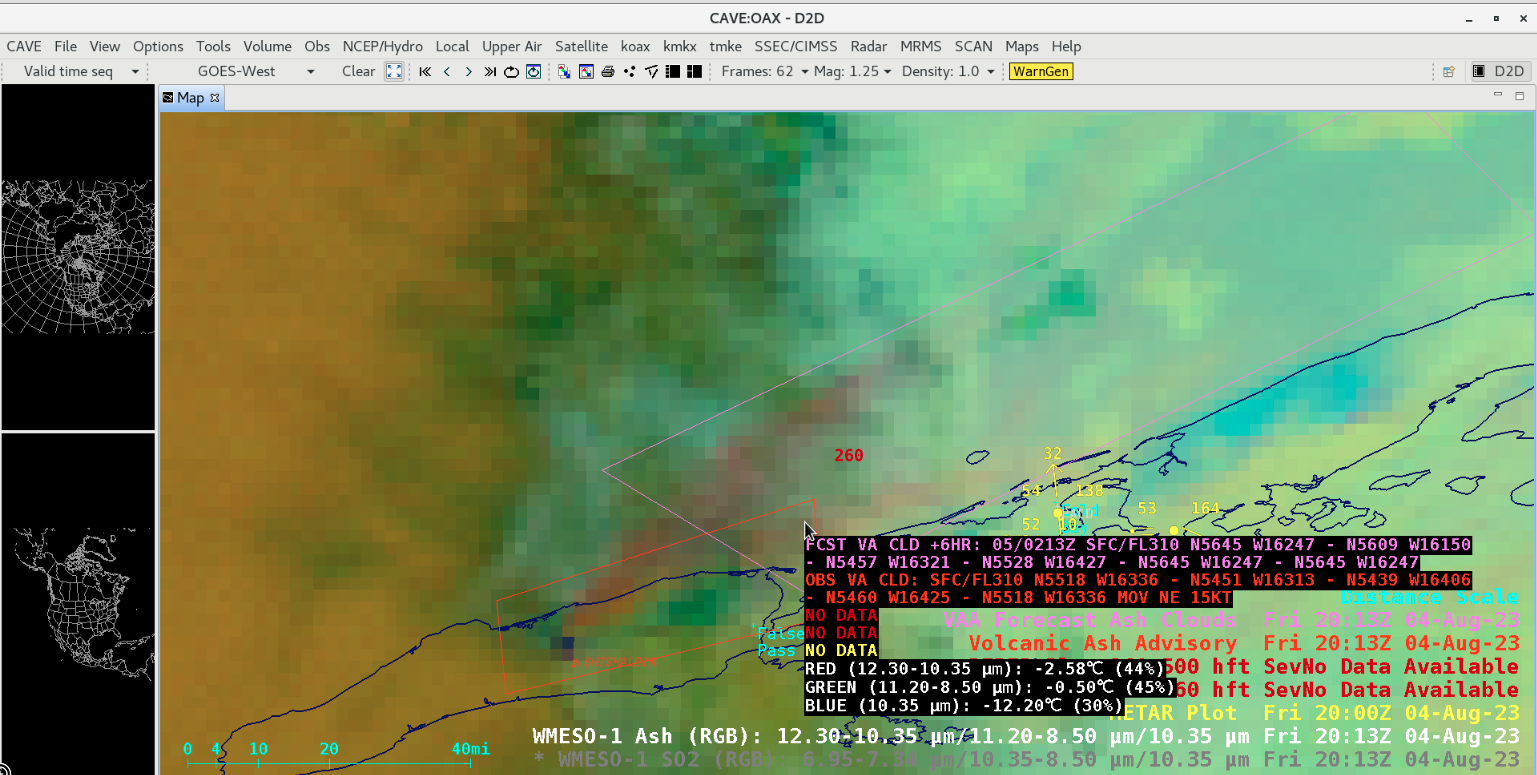
GOES-18 Ash RGB image, with Volcanic Ash Advisory (red) and Forecast (violet) polygons issued at 2013 UTC [click to enlarge]
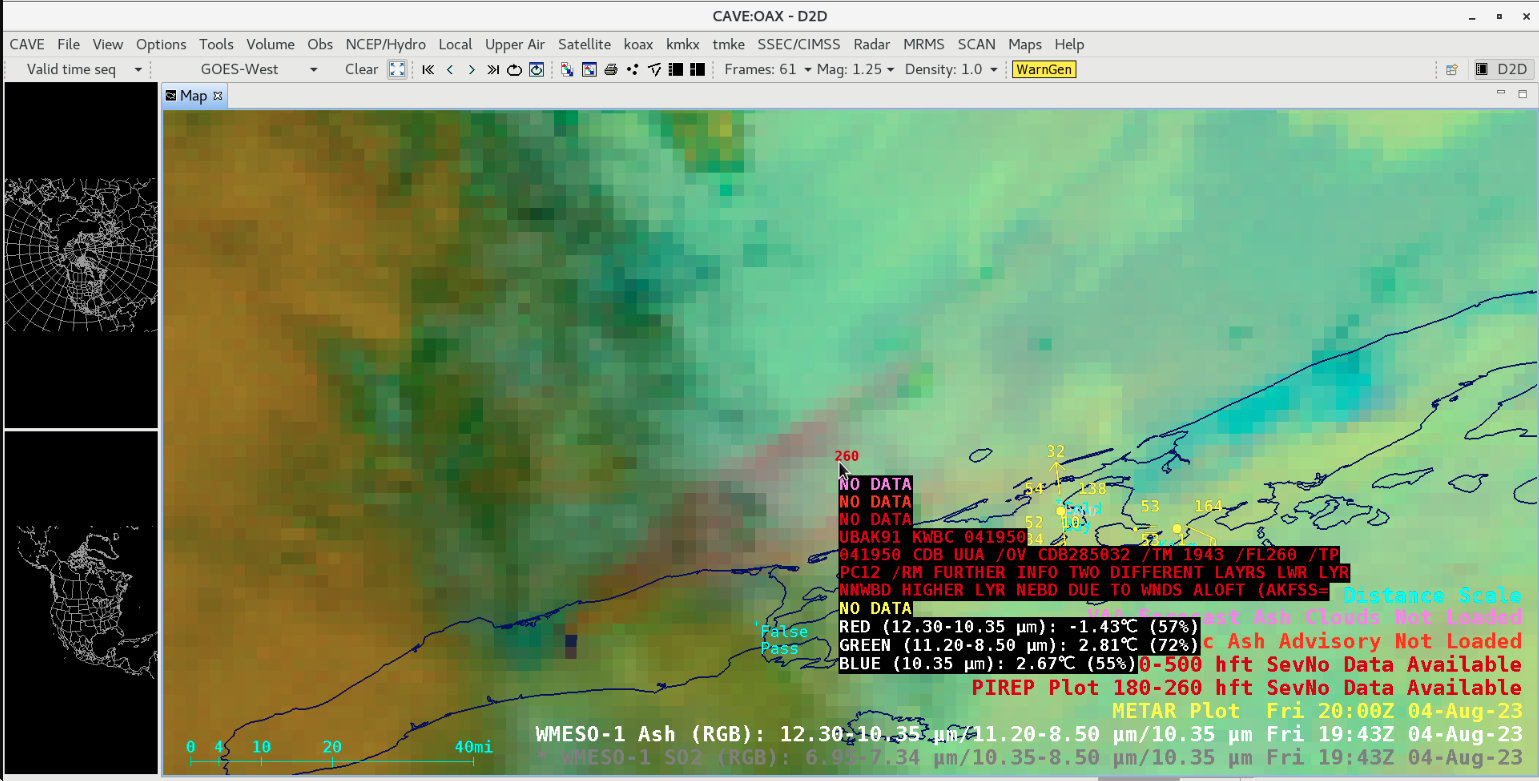
Pilot Report at 1943 UTC, mentioning ash at two different altitudes (moving in different directions) [click to enlarge]
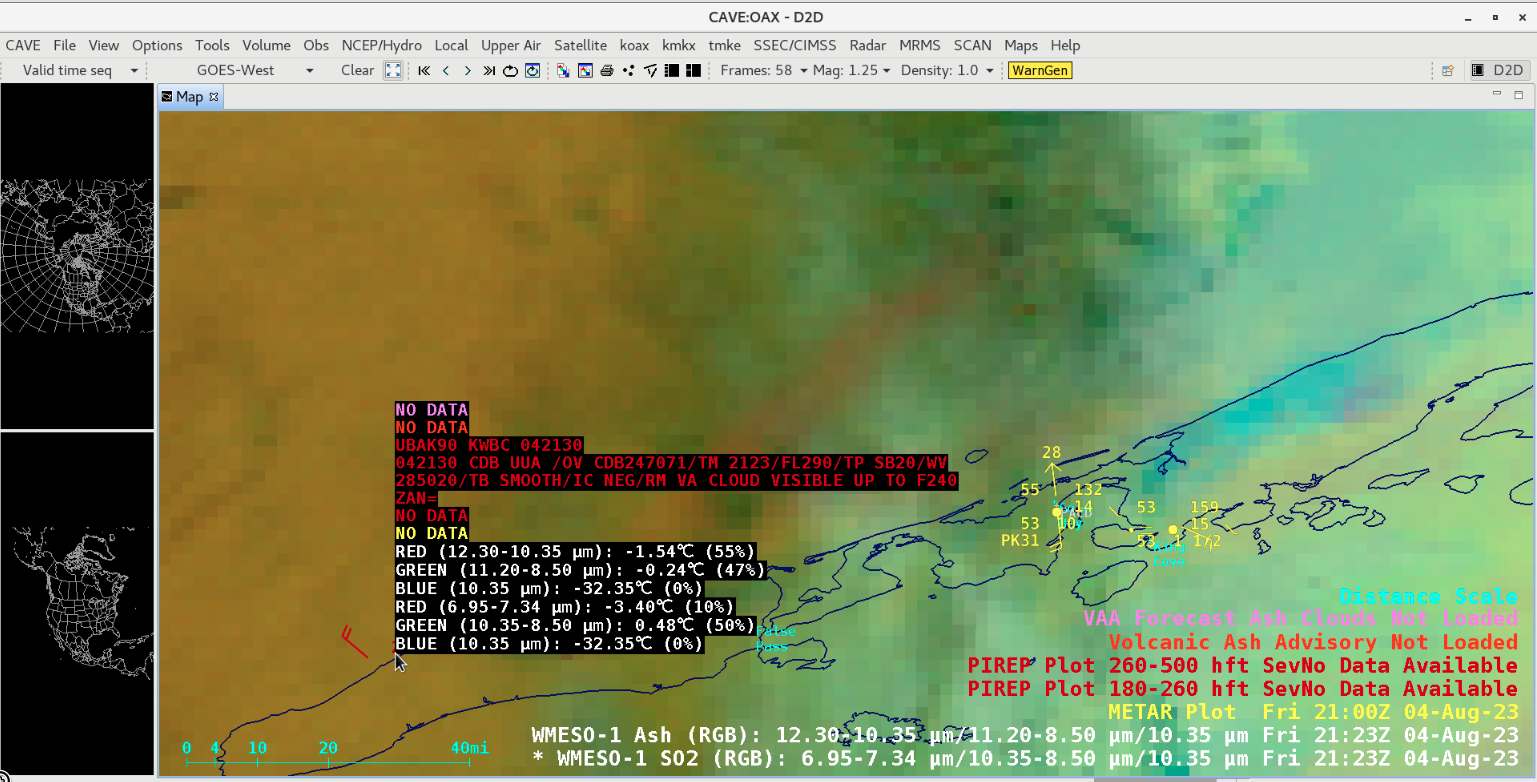
Pilot Report at 2123 UTC, describing volcanic ash (VA) up to an altitude of 24000 ft [click to enlarge]

Pilot Report at 2139 UTC, mentioning volcanic ash (VA) visible 50 miles north of Cold Bay (CDB) at an altitude of 22000 ft [click to enlarge]


